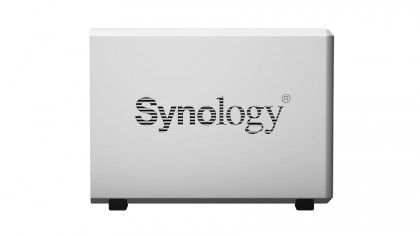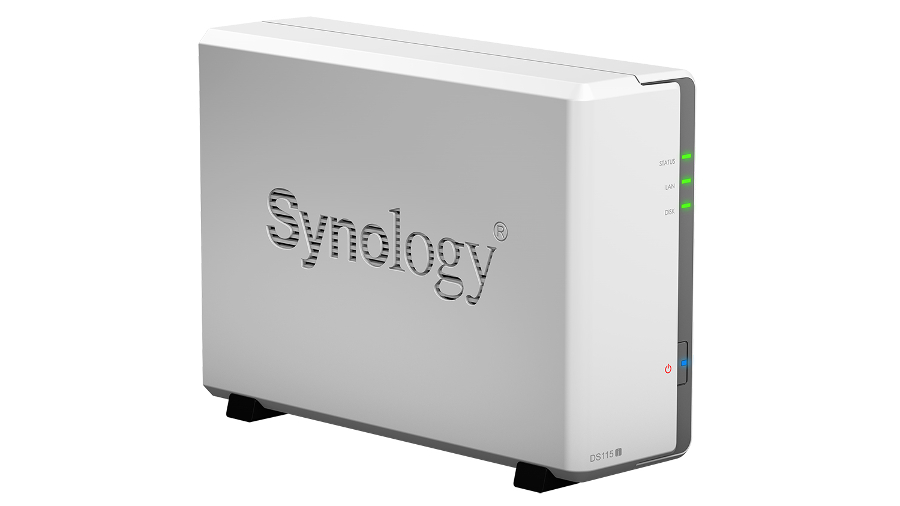Why you can trust TechRadar
There are a lot of additional software tools with this NAS, in fact too many to go into detail about each one in this review – but a few catch the eye.
Firstly, it's easy to set up the DS115j for external access via the web, either via QuickConnect and Synology's MyDS service, or via another dynamic DNS system.
There's a security section in the control panel, with useful things such as DoS protection, a basic firewall, a way to automatically block IP addresses that fail to log in, and so on.
There's also a software package from Synology called Antivirus Essential, available from the Package Manager.
You can host a website on the DS115j, with Wordpress, Drupal and Joomla support, and of course there's DLNA and an iTunes media server. The DS115j can be configured as part of a domain or Windows Active Directory, and there are separate settings for Windows and Apple networking, as well as Samba and NFS. Of course there's an FTP server as well.
Other modules are available such as a VPN server, browser-based video and image viewers, surveillance management tools, voice communications, and more. I counted 59 modules in total available for the DS115j, although there are even more for the higher-end Synology units.
There's software to manage downloads via FTP, BitTorrent and so on, which lets you use the DS115j as an always-on torrent client, instead of leaving a PC turned on all the time.
Resource limitations
This is one aspect of the DS115j where the limited CPU and memory resources restrict what it can do. You're limited to 20 concurrent downloads, while the more high-end Synology NAS products, with Intel Xeon processors, go up to 80. There are other limits too. For example, if you use the DS115j with IP cameras, it only captures at 20fps at 1080p resolution.
As a further addition, there are eight mobile apps available for iOS, Android and Windows Phone. Support for the latter is good to see, given that Windows Phone is often last on the priorities list of mobile developers. The modular software system of Synology NAS products makes them more than merely network-accessible storage.
It appears not much has been disabled with the DS115j either, so for the price, you're getting a basic network server in addition to all the standard NAS-related things it can do. Not bad value at all.

Performance
I tested the DS115j with a basic file transfer, moving a 5GB folder filled with large movies, and one with smaller picture files, to and from the device. For more detailed analysis I also used Intel's NAS Performance Toolkit.
Gigabit Ethernet is limited to a theoretical maximum sequential transfer rate of 125MB/sec, less than the 152MB/sec I measured in my review of the WD Red 6TB. So it's clear that hard disk performance wouldn't limit the DS115j.
The WD Red 6TB was a good choice for testing as it's designed for use with NAS devices, with many small firmware tweaks that improve reliability when used in a NAS, although some of these tweaks assume it will be used as part of an array of multiple disks.
With the large file transfer I measured 46MB/sec while uploading to the device, and 51MB/sec downloading from it.
Smaller files create more overhead, and create more work for the processor in the DS115j, so performance is expected to be slower. But with 51MB/sec reading and 45MB/sec writing, the actual speeds were pretty much the same.
The Intel NAS Performance Toolkit is a suite of simulated file transfers that mimic different usage, such as playing HD video. It's a bit of a pain to use, since it (rightly) insists you limit system memory to 2GB in MSConfig to prevent caching interfering with NAS performance.
A highlight of this test was the 2xHD score, simulating two HD movies being played at once, where speeds hit 102MB/sec, beating a two-bay Zyxel NSA325 I had also tested under the same conditions. HD Playback Record was similarly better at 87MB/sec.
The only two areas where the DJ115j fell short were the Content Creation and Photo Editing tests, where it came in at just 8.9MB/sec and 8.5MB/sec.
But these speeds really aren't bad at all, given the low price and relatively low-end processor. They measure up well against some two-bay NAS devices and show that you shouldn't expect poor performance if you're on a limited budget.
